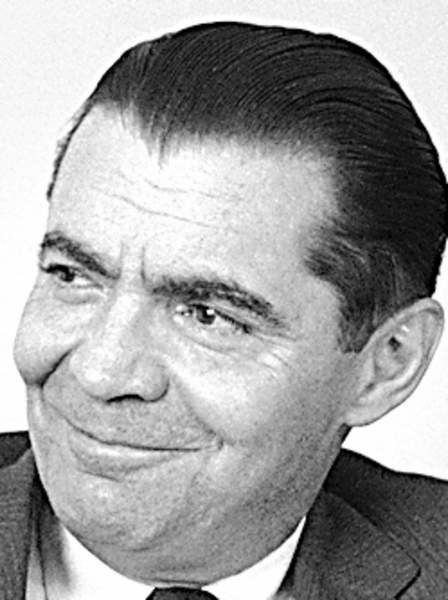George Palade a leader in intricate cellular study
Published 5:00 am Sunday, October 12, 2008

- George Palade
LOS ANGELES — Dr. George Palade, whose discoveries about the inner workings of cells helped give birth to the field of modern cell biology and earned him a Nobel Prize, died Tuesday at his home in Del Mar, Calif., at 95.
The cause was complications of Parkinson’s disease, said his wife, Dr. Marilyn Farquhar.
Beginning in the 1940s, Palade pioneered the use of electron microscopy and other techniques to discover tiny structures within cells, and to discern their functions. He discovered the ribosome, the cell’s protein-making factory, and helped explain the way proteins are transported out of the cell, as when a pancreatic cell secretes insulin, for example.
Such discoveries later proved useful in understanding diseases and in the protein production that is the basis of the biotechnology industry.
“In cell biology, he is clearly the most influential scientist ever,” Dr. Guenter Blobel, a professor at Rockefeller University, said Wednesday. Blobel, who was once a postdoctoral researcher in Palade’s laboratory, won a Nobel Prize of his own in 1999 for essentially following up on some of Palade’s discoveries.
Palade shared the Nobel Prize in Physiology or Medicine in 1974 with Albert Claude and Christian de Duve. Awarding the prize, the Karolinska Institute said the three had been “largely responsible for the creation of modern cell biology.”
In his acceptance speech, Palade said the new discoveries would lead to better understanding of diseases, many of which are caused by cellular dysfunction.
“Cell biology,” he said, “finally makes possible a century-old dream: that of analysis of diseases at the cellular level, the first step toward their final control.”
George Emil Palade was born on Nov. 19, 1912, in Iasi, Romania. His father, a professor of philosophy, had hoped the son would follow in his footsteps. But young George “preferred to deal with tangibles and specifics,” he would recall in the autobiography he wrote upon becoming a Nobel laureate.
He earned a medical degree from the University of Bucharest, but his interest was in basic science. So he went to New York University in 1946 for further studies and moved the next year to the Rockefeller Institute for Medical Research, now Rockefeller University, where a new field was being born.
Scientists had started examining cells using light microscopes in the 19th century. But those microscopes were not powerful enough to see structures much smaller than the cell nucleus, so the field had stagnated.
At Rockefeller, however, Claude had begun using a more powerful tool, the recently invented electron microscope. This was not a straightforward process, because the cells could be damaged as a result of it.
But Palade helped refine electron microscopy of cells “to the highest degree of artistry,” the presenter of his Nobel Prize said.
He also helped develop a technique called cell fractionation, in which cells are broken apart and components are separated based on their density. This isolated each of the components so they could be studied.






